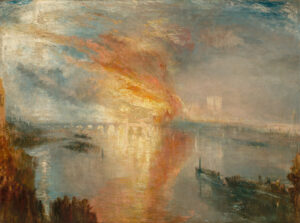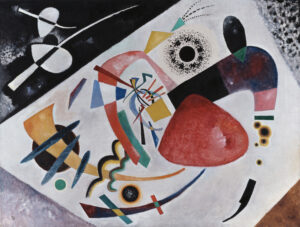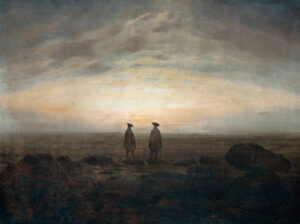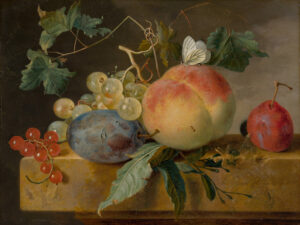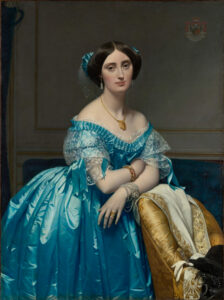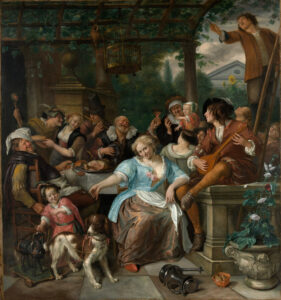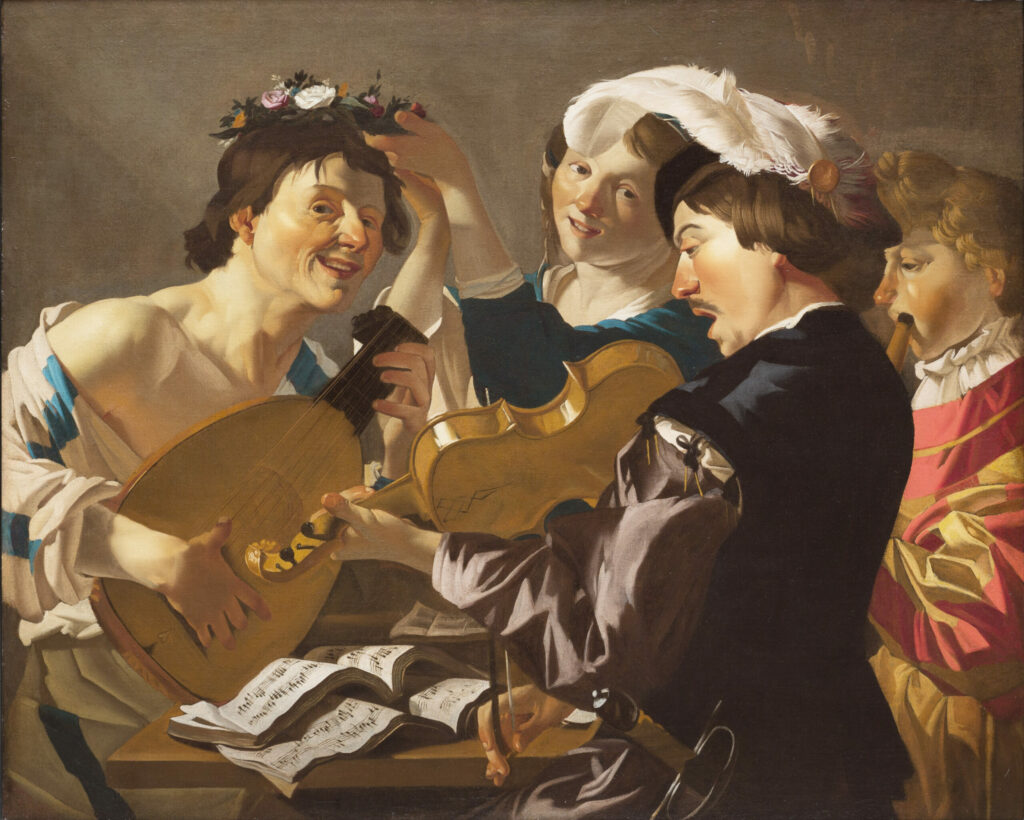
The Concert (c. 1623) by Dirck Van Baburen perfectly illustrates the influence of Caravaggism on the Utrecht School.
This work presents four musicians gathered around a musical score, bathed in characteristic light. The composition reveals a skillful temporal blend: Renaissance costumes mingle with contemporary dress, ancient and modern instruments harmonize together. The symbolic gesture of the woman crowning the lutenist with flowers evokes a theatrical troupe welcoming a musician of quality. The lateral lighting, a direct legacy from Caravaggio, sculpts the expressive faces and makes textures shimmer: silk of the doublet, varnished wood of the violin, paper of the sheet music. This technique transforms a simple genre scene into a living tableau, where each detail contributes to the joyful and theatrical atmosphere of this musical gathering.
Further information
- Dirck Van Baburen, The Concert, c. 1623, oil on canvas. Detroit Institute of Arts, Museum purchase, Robert H. Tannahill Foundation Fund, 2010.17.
- 105.4 × 133.3 cm (41 1/2 × 52 1/2 in.)
- Detroit Institute of Arts, exhibited in Europe: Medieval and Renaissance, Level 2, West Wing
- https://dia.org/collection/concert-100598
Dirck Van Baburen (1595-1624) embodies the perfect synthesis between Northern tradition and Italian innovation. Born in Wijk bij Duurstede, he trained in the workshop of the Mannerist Paulus Moreelse before his decisive departure for Italy in 1611. During his nine-year Roman sojourn, he not only absorbed the Caravaggesque lesson but developed a personal approach to naturalism and chiaroscuro. Upon his return to Utrecht in 1620, his meteoric career—alas interrupted by his premature death at 29—made him one of the pillars of Northern Caravaggism. Alongside Gerrit van Honthorst and Hendrick ter Brugghen, he revolutionized Dutch genre painting, infusing everyday scenes with unprecedented dramatic intensity and psychological truth. His influence endures well beyond his brief existence, permanently marking the art of the Dutch Republic.

